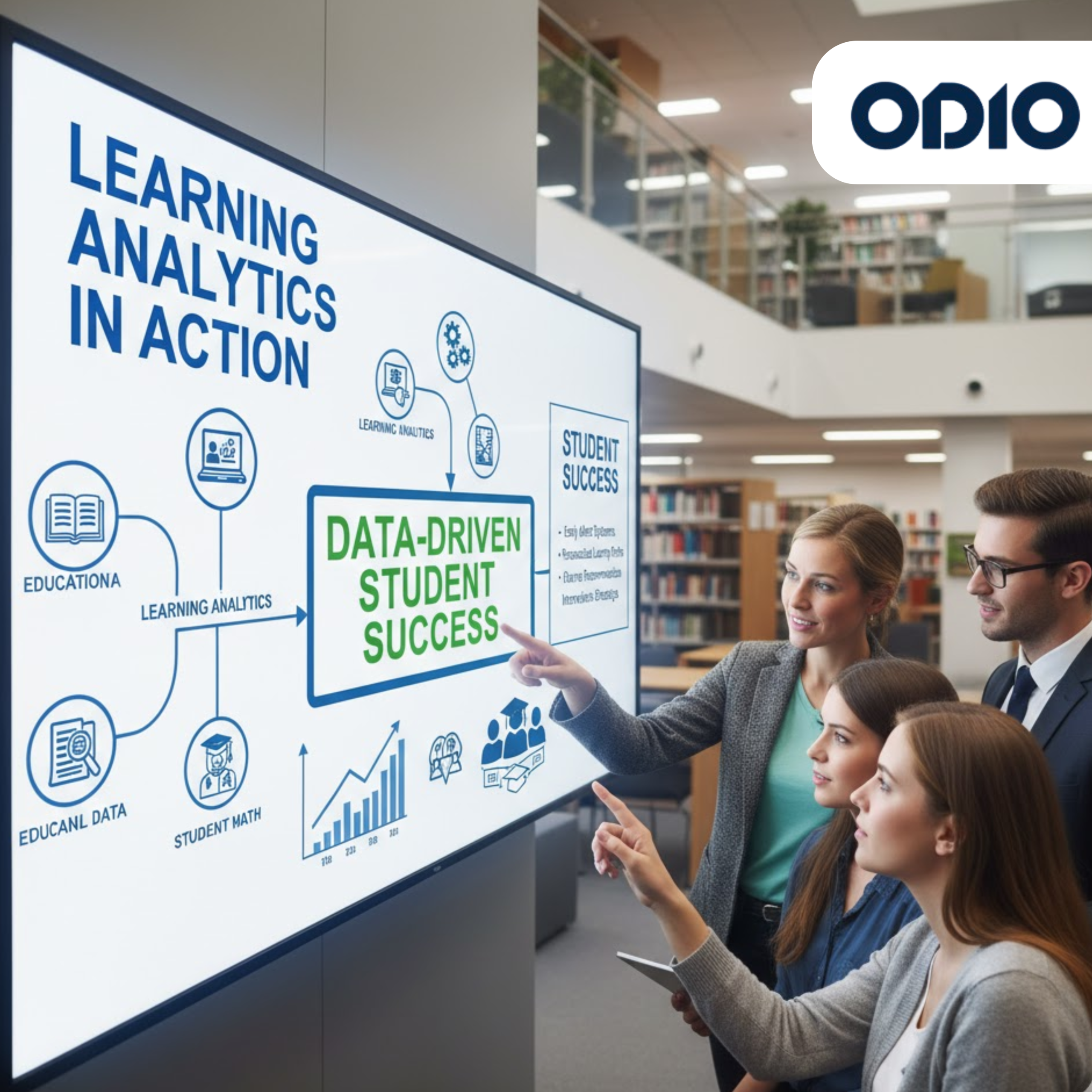
In today’s digitally driven educational landscape, institutions are generating an unprecedented volume of data. From LMS clickstreams and assignment submissions to attendance records and demographic profiles, this data is a rich, untapped resource. The challenge, however, lies in moving beyond simple data collection to extracting meaningful, actionable intelligence. This is the core purpose of Learning Analytics in Action: transforming raw educational data into strategic insights that actively foster student success and institutional effectiveness.
This deep dive explores how this transformative practice is shifting education from a reactive process to a proactive, personalized, and predictive model.
1. Defining the Analytical Edge: What Data Reveals
Learning Analytics (LA) is defined as the measurement, collection, analysis, and reporting of data about learners and their contexts, for purposes of understanding and optimizing learning and the environments in which it occurs. It is the engine that drives the data-informed decision-making required for modern digital transformation.
The LA Data Cycle
For effective Learning Analytics in Action, data flows through a distinct cycle, which dictates the quality of the insights:
- Data Collection: Gathering behavioral (LMS interaction), performance (grades, scores), and demographic data.
- Analysis: Employing techniques like descriptive (What happened?), diagnostic (Why did it happen?), predictive (What will happen?), and prescriptive (How can we make it happen?) modeling.
- Intervention: Using the insights to trigger timely actions by students, instructors, or administrators.
- Refinement: Evaluating the impact of the intervention to improve the analysis models.
2. Success Stories: Turning Data into Targeted Interventions
The true power of Learning Analytics in Action is demonstrated through practical use cases where data directly leads to improved outcomes.
2.1. The Predictive Power of Early Warning Systems (EWS)
EWS represents one of the most immediate and impactful applications of LA. To illustrate this, imagine a cohort of 500 students in an introductory course. An EWS model ingests data points such as a student’s lack of activity on the discussion board, a significant drop in their second quiz score compared to the first, and a low module completion rate and translates them into a risk score.
- Actionable Insight: The system identifies 15 students who are statistically 80% likely to fail or drop the course before the mid-term.
- Intervention: Consequently, the academic advisor or instructor receives an alert and immediately initiates a proactive, personalized outreach, offering tutoring resources or counseling.
- Outcome: Early intervention mitigates the risk, turning potential failure into a student success story.
2.2. Personalizing Learning Pathways with Adaptive Content
Generic curriculum delivery often leaves both high-achieving and struggling students underserved. Furthermore, Learning Analytics in Action provides the detailed performance and engagement data necessary to facilitate true personalization.
- Diagnostic Analysis: An LA system identifies that a student is struggling with the ‘Calculus Integration’ module but is excelling in ‘Differential Equations.’ The data suggests a specific foundational gap (e.g., in algebra skills), not a general lack of aptitude.
- Intervention: The Learning Management System (LMS) dynamically serves targeted review materials on the prerequisite algebra topic, rather than forcing the student to re-do the entire module.
- Outcome: Students spend their time mastering specific weaknesses, dramatically improving efficiency and confidence, which are key drivers of long-term student success.
2.3. Optimizing Curriculum and Institutional Effectiveness
Beyond the individual learner, LA scales insights to improve the educational environment itself. In fact, institutional leaders use LA to make strategic decisions about resource allocation and curriculum design.
- Systemic Analysis: LA data reveals that students from a specific high school district consistently perform poorly in a required remedial math course, regardless of their standardized test scores.
- Prescriptive Action: The institution collaborates with the high school to align their preparatory curriculum or revises the placement criteria for the course. Moreover, LA identifies which specific modules within a course have the highest failure rates, allowing faculty to revamp content or pedagogy.
3. The Future: Ethical Analytics and Institutional Buy-in
To fully realize the potential of Learning Analytics in Action, institutions must address the inherent technical and ethical challenges.
3.1. Technical Implementation and Data Integrity
The success of any LA strategy hinges on data quality and integration. Data silos – where student information resides separately in the LMS, SIS (Student Information System), and CRM – cripple the analysis. Therefore, a robust, integrated data architecture is non-negotiable. Modern platforms designed for educational data aggregation are essential for ensuring data is consistent, timely, and accessible for complex predictive modeling.
3.2. Ethical Considerations and Trust
While data offers immense opportunities, it carries profound ethical responsibilities. Biases embedded in historical data can inadvertently perpetuate inequities, for example, by disproportionately flagging minority or low-income students as “at-risk.”
- Mitigation: Transparency is key. However, models must be regularly audited for bias and fairness. Students must understand what data is collected and how it is used, fostering a culture of data literacy and trust among all stakeholders.
Conclusion: The Mandate for Data-Informed Education
Learning Analytics in Action is no longer an optional component of modern education – it is a mandatory driver of student success. By embedding data into every aspect of the learning experience from the design of a course module to the timing of an advisor’s intervention – institutions can move beyond anecdote and intuition to evidence-based strategies. Ultimately, the careful, ethical, and strategic use of learning data is the most powerful tool available to ensure every student not only enrolls but thrives, turning institutional data into countless success stories.
Take the Next Step
Ready to move from collecting data to actively fostering student success?
Discover how our Odio Platform integrates your disparate data sources into a unified, actionable Learning Analytics dashboard, empowering your faculty and advisors with the predictive insights they need.
[Contact Our Experts Today to Schedule a Demo and Revolutionize Your Student Support Strategy!]

